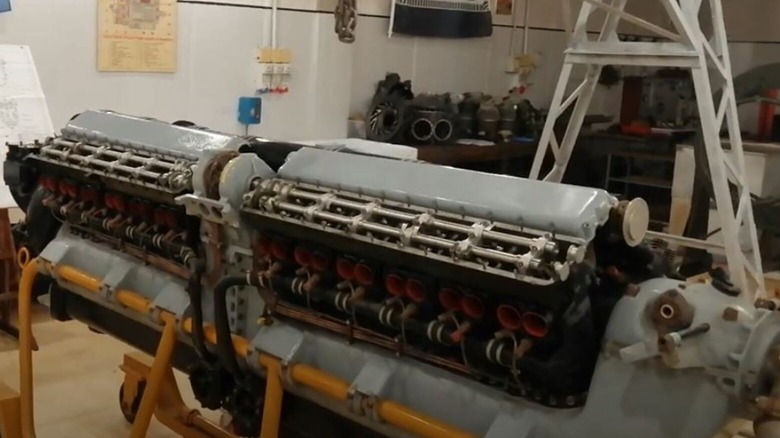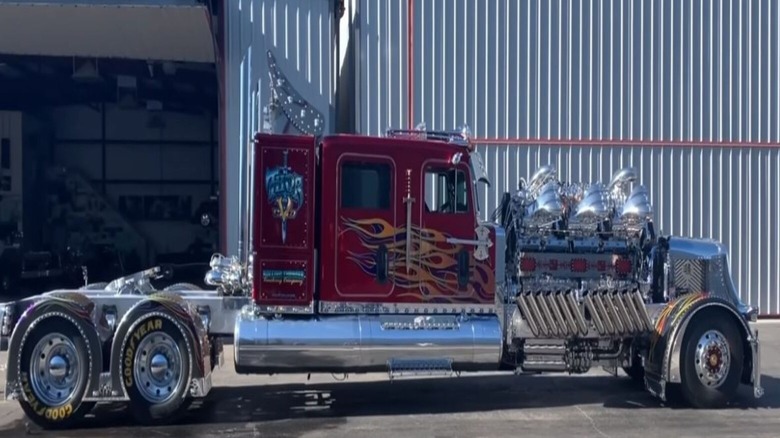V24 Engines: How Much Power Could They Make & How Were They Used?
From its modest beginnings in 1860 as a single-cylinder, coal gas-powered machine capable of just two horsepower, to the high-revving, 1,000-horsepower V6 powerplants used in F1 cars today, the evolution of internal combustion engines has been extraordinary. Based on a recent study, 96% of all passenger vehicles in the world as of 2024 are still powered by internal combustion. Categorized based on size, fuel types, and cylinder configurations, the most common are gasoline and diesel engines in straight or "V" arrangements, and one of the biggest made was a 24-cylinder monster arranged in a "V" layout.
Installed on the Macchi-Castoldi M.C.72 race plane of the Italian Air Force Ministry in 1931, the AS.6 was the world's first V24 engine, created by automobile manufacturer Fiat. Built from a combination of two Fiat AS.5 engines arranged end to end, the resulting AS.6 produced 2,400 horsepower. Seven years later, American engine maker Allison utilized a similar design strategy of combining two engines and created its own V24 engine, the V-3420, which was released in 1938. The V-3420, however, differed by having the engines mounted side-by-side and produced an impressive 2,300 horsepower.
With four or three times the number of cylinders in the engines that power most vehicles on the road, a V24 engine is an enormous machine and is among the biggest engines in the world. Modern V24 engines have limited applications, one of which is the marine industry, where it is used for boats, like Detroit Diesel 24V-71, with its 1,550 horsepower output. Another is the Jenbacher J624 engine, which produces 4,459 kilowatts from its 4,400 horsepower rating.
Powerful but impractical
Compared to inline layout engines, a V-type engine is more complex, as its cylinder chambers are laid out at a 90-degree angle. This design allows the engine to have more torque and power than inline engines, in a shorter package than those with the same number of cylinders. This complexity, however, makes V-type engines more expensive to build and maintain due to the greater number of parts, as seen in the 24-cylinder Allison V-3240, which had an astonishing 11,630 parts built into it.
There are currently no production vehicles equipped with a V24 engine, as its size, weight, and reliability issues would make it impractical. Additionally, the higher displacement of the engine would make it very fuel hungry, likely even less than the 10 mpg that some supercars are capable of. There is, however, a custom-built semi-truck with a V24 engine called Thor, which uses a highly modified Detroit Diesel marine engine that makes 3,974 horsepower. Today, the closest a modern production car with a comparably significant number of cylinders is the upcoming Bugatti Tourbillon, which will feature a V16 engine.
The concept of the V24 engine to power aircraft may have been a good idea then, but modern aircraft are no longer propeller-driven and instead use turbine engines. For marine use, new engines with half the cylinders produce 500 more horsepower than the old V24. Advances in engine technology have allowed smaller engines for automobiles to produce large amounts of power, like the Aston Martin V12, which churns out 1,000 horsepower or the world's fastest car, Bugatti Chiron Super Sport 300, which has 1,500 horsepower from its W16 engine.

